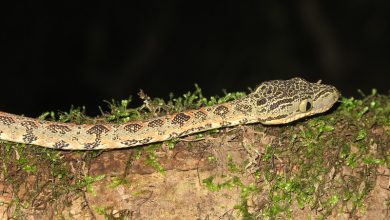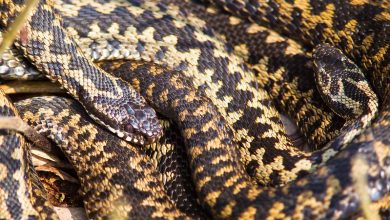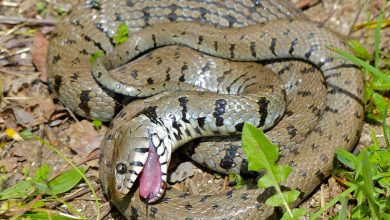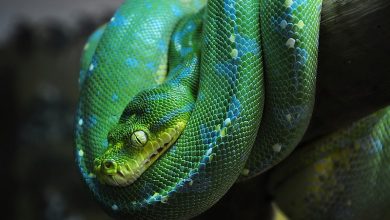snake eggs vs lizard eggs » In the fascinating world of reptiles, the way they reproduce and nurture their young is as varied and intriguing as the creatures themselves. This article delves into the specifics of snake and lizard eggs, exploring the similarities and differences in their reproductive strategies. From the texture of their shells to their nesting habits and incubation needs, we’ll uncover the unique aspects of these eggs and the survival challenges they face in the wild. Join us as we crack open the secrets of snake and lizard eggs and gain a deeper understanding of these remarkable creatures.
Table of Contents » Snake Eggs vs Lizard Eggs
Key Takeaways
- Snake and lizard eggs exhibit distinct characteristics in shell texture and color, reflecting their adaptation to different environmental conditions.
- The nesting sites of snakes and lizards are influenced by environmental factors and species-specific behaviors, with some preferring secluded locations while others opt for communal nesting.
- Incubation temperatures are crucial for the development of both snake and lizard eggs, with some species requiring parental care and others relying on natural heat sources.
- The hatching process of snake and lizard eggs involves unique mechanisms, with variations in the time and effort required for the young to emerge.
- Predation and habitat destruction pose significant threats to the survival of snake and lizard eggs, necessitating conservation efforts to protect these vulnerable stages of reptile life.
Cracking the Shell: A Look at Snake and Lizard Eggs
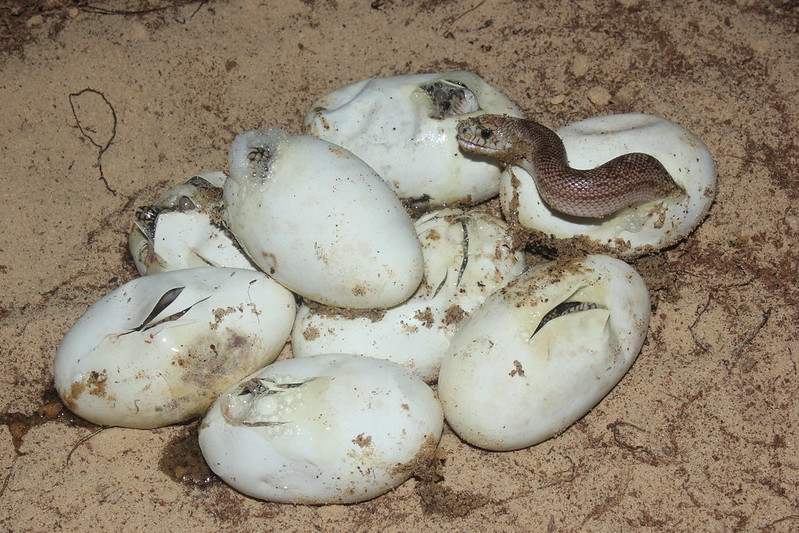
The Basics of Snake Eggs
When it comes to reptilian reproduction, snake eggs are a marvel of nature. Unlike birds, snakes lay eggs that are often leathery and soft. This flexibility allows the eggs to expand as the embryos grow. Most snakes lay eggs, but did you know that some species are ovoviviparous? That means they give birth to live young, bypassing the egg-laying stage altogether.
Oviparous snakes, those that do lay eggs, tend to choose secluded spots to deposit their precious cargo. The number of eggs in a clutch can vary wildly, from just a couple to over a hundred in some species. Here’s a quick peek at what a typical snake egg clutch might look like:
- Shape: Generally oblong or elliptical
- Size: Varies greatly among species
- Texture: Leathery and pliable
- Color: Often white or off-white, camouflaged
Tip: If you stumble upon snake eggs in the wild, it’s best to leave them undisturbed. Many species are protective of their nesting sites and may be nearby, even if you can’t see them.
Lizard Eggs Uncovered
When it comes to lizard eggs, there’s a whole world of diversity just waiting to be explored. Unlike their slithery counterparts, many lizards lay eggs with a leathery texture, allowing for a bit more give and flexibility when the little critters are ready to emerge. These shells are less prone to drying out, which is a nifty adaptation for eggs laid in some of the drier habitats lizards often call home.
Variety is the spice of life, and that certainly applies to the places lizards choose to deposit their precious cargo. From the nooks of trees to the depths of sandy burrows, each species has its own unique strategy to ensure the safety and development of their offspring.
- Oviparous lizards: Lay eggs that hatch outside the mother’s body.
- Viviparous lizards: Give birth to live young, bypassing the egg stage entirely.
- Ovoviviparous lizards: Retain eggs inside their body until they hatch.
Remember, not all lizards lay eggs! Some give birth to live young, showcasing the remarkable adaptability of these reptiles.
Textures and Colors: The Eggshell Differences
When it comes to the eggshell game, snakes and lizards are playing by different rules. Snake eggs are often soft and leathery, giving them a bit of a squishy feel. They’re not the hard-boiled types you might find in a bird’s nest. Lizards, on the other hand, can lay eggs that range from soft to firm, with some even sporting a calcium carbonate coat that’s tough enough to make you think twice before squeezing.
Colors also tell a tale of diversity. Snake eggs usually stick to a conservative wardrobe, mostly donning off-white or creamy hues. Lizard eggs? They’re a bit more flamboyant, with shades that can span from pearly whites to earthy browns, sometimes even with a hint of pattern or speckle.
Here’s a quick peek at the variety you might encounter:
- Snake Eggs: Generally soft, leathery, off-white or cream.
- Lizard Eggs: Can be soft or hard, with a wider color palette including white, brown, and speckled varieties.
Remember, the texture and color of an egg can be a big clue to its owner’s identity. So, if you’re out herping, keep an eye out for these subtle signs!
Nesting Habits: Where Do They Lay?
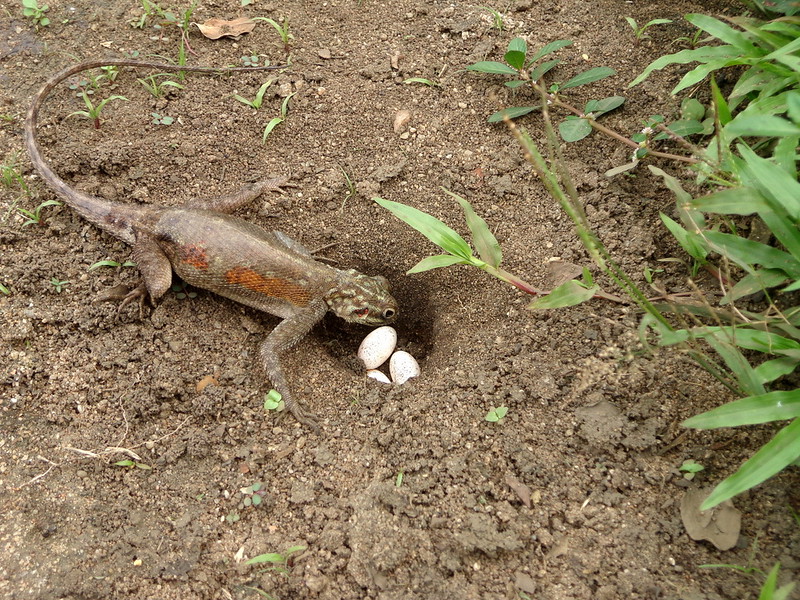
Snake Nesting Sites Explained
After slithering through the details of where snakes cozy up to lay their eggs, let’s shift our focus to their cold-blooded cousins, the lizards. Unlike snakes, many lizards opt for more exposed nesting sites. Here’s a quick rundown of some common lizard egg-laying locales:
- Rock crevices: Offering shelter and warmth, these natural hideaways are a top pick for some species.
- Leaf litter: A camouflage champion, leaf litter keeps eggs hidden from prying eyes.
- Burrows: Dug by the lizards themselves or borrowed from other animals, burrows provide a safe, controlled environment.
- Tree hollows: For the tree-dwelling types, hollows serve as a lofty nursery.
Remember, the choice of nesting site is crucial for the survival of the eggs. Lizards tend to be quite picky, looking for the perfect balance of humidity, temperature, and security.
Each species has its own strategy, influenced by its environment and predators. The diversity in nesting choices among lizards is just another testament to their adaptability in the wild. So, while snake eggs might be tucked away out of sight, lizard eggs often tell a story of a more varied approach to parenthood.
Lizard Lair Locations
Lizards are quite the real estate savants when it comes to choosing a spot for their eggs. Unlike snakes that often opt for a hidden, singular locale, lizards display a fascinating array of nesting choices. Some species, like the beach-dwelling sea turtles, will travel great distances to lay their eggs in sandy shores, while others might just dig a hole in the backyard.
Location, location, location – it’s not just a mantra for homebuyers but for lizards too. Here’s a quick rundown of the diverse places these reptiles call their nursery:
- Underground burrows: A favorite for many, offering protection from the elements and predators.
- Tree hollows: Arboreal species get a bird’s-eye view for their offspring.
- Leaf litter: A simple, yet effective camouflage tactic.
- Human-made structures: Some lizards have adapted to urban environments, utilizing gardens and buildings.
Tip: If you’re keen on spotting lizard eggs, tread lightly! Disturbing a nest can have dire consequences for the eggs.
Each location has its own set of pros and cons, influenced by factors like temperature, humidity, and predator presence. It’s a delicate balance that these reptiles have mastered over millennia, ensuring their little ones have the best shot at life right from the get-go.
Impact of Environment on Nesting Choices
The environment plays a pivotal role in the nesting choices of both snakes and lizards. These cold-blooded critters seek out the perfect spot that ensures the right temperature and humidity for their eggs to thrive. Here’s a quick peek at how they make their pick:
- Snakes often opt for underground burrows or the shelter of rocks and logs. They’re all about that stable temperature and hidden locale.
- Lizards might be a bit more diverse in their approach, sometimes using the sand for its insulating properties or even commandeering other animals’ nests!
Remember, the ideal nesting site is like real estate for these reptiles: it’s all about location, location, location!
While both snakes and lizards are influenced by their surroundings, they also have to consider the risk of predators and the availability of resources. It’s a delicate balance between finding a safe haven for their future offspring and ensuring they’re not too far from the necessities of life.
Incubation Intricacies: Warming Up to Hatch
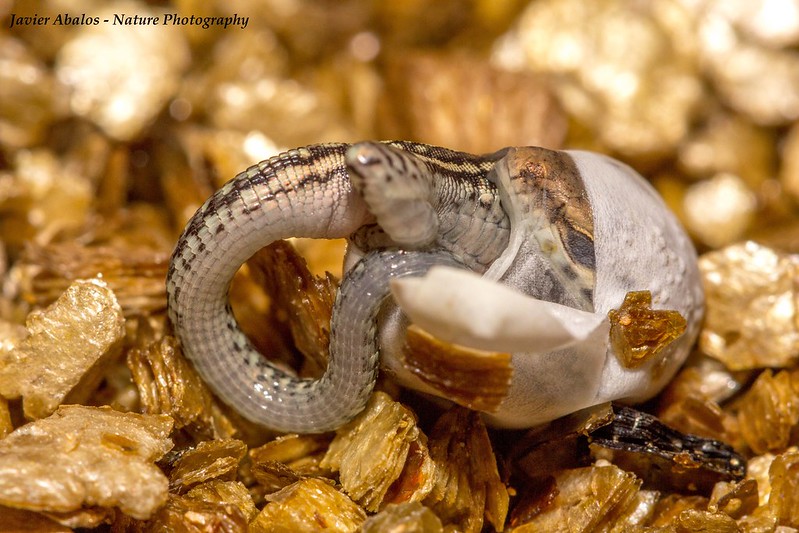
Temperature Needs for Snake Eggs
When it comes to hatching, snake eggs are pretty picky about their warmth. Unlike birds, snakes can’t cozy up to their eggs to keep them toasty. Instead, they rely on the ambient temperature of their environment to do the job. It’s a delicate balance, as too much heat can be just as harmful as too little.
Oviparous snakes, those that lay eggs, often seek out spots that naturally regulate temperature. Think compost heaps or sun-baked riverbanks. Here’s a quick rundown of the ideal temperature ranges for snake egg incubation:
- Tropical species: 80-90°F (27-32°C)
- Temperate species: 70-80°F (21-27°C)
- Desert species: May vary greatly
Tip: Always check the specific needs of a species, as there can be significant variation even within these broad categories.
Maintaining the right temperature is crucial for the development of the embryos inside the eggs. Too cold, and the metabolism of the developing snakes slows down, leading to longer incubation times or even failure to hatch. Too hot, and the embryos could overheat, which can be fatal.
Lizard Eggs’ Heat Requirements
Just like their slithery counterparts, lizards have some pretty specific demands when it comes to incubation temperatures. However, the stakes are a bit different here. For many lizard species, the temperature of the nest can actually determine the sex of the hatchlings – talk about a hot topic!
Lizard eggs generally need a warm and stable environment to develop properly. Too cold, and the embryos might not survive. Too hot, and you could speed up development, but at the cost of some potential health issues for the little critters. It’s all about finding that sweet spot.
Here’s a quick rundown of ideal temperature ranges for some common lizard species:
- Bearded Dragons: 80-85°F (27-29°C)
- Leopard Geckos: 80-90°F (27-32°C)
- Anoles: 84-89°F (29-32°C)
Tip: Consistency is key! Fluctuations in temperature can lead to developmental problems, so it’s crucial to maintain a steady incubation environment for lizard eggs.
Parental Care vs. Natural Incubation
When it comes to hatching, not all reptiles play the parenting game. In the world of snakes and lizards, there’s a mix of parental care and what you might call a ‘set it and forget it’ approach. For instance, pythons are like the helicopter parents of the snake world, often seen wrapping themselves around their eggs to keep them warm. On the flip side, many lizards, like the common gecko, lay their eggs and bounce, leaving the little ones to fend for themselves from the get-go.
Temperature plays a crucial role in the incubation of reptile eggs, and that’s where natural incubation comes into play. Mother Nature’s got her own incubator settings, and they can vary wildly from one habitat to another. Here’s a quick peek at how these critters stack up:
- Snakes: Some use the heat from decomposing vegetation, others rely on the ambient warmth of their surroundings.
- Lizards: Many dig burrows or find cozy spots under rocks, banking on the earth’s natural heat to do the job.
Remember, the temperature not only affects the incubation period but can also determine the sex of the hatchlings in some species.
While some reptile moms and dads might seem a bit neglectful by human standards, they’ve got their own unique ways of ensuring their offspring make it to hatching day. It’s all about survival, and in the wild, sometimes less is more.
From Eggs to Babies: The Hatching Process
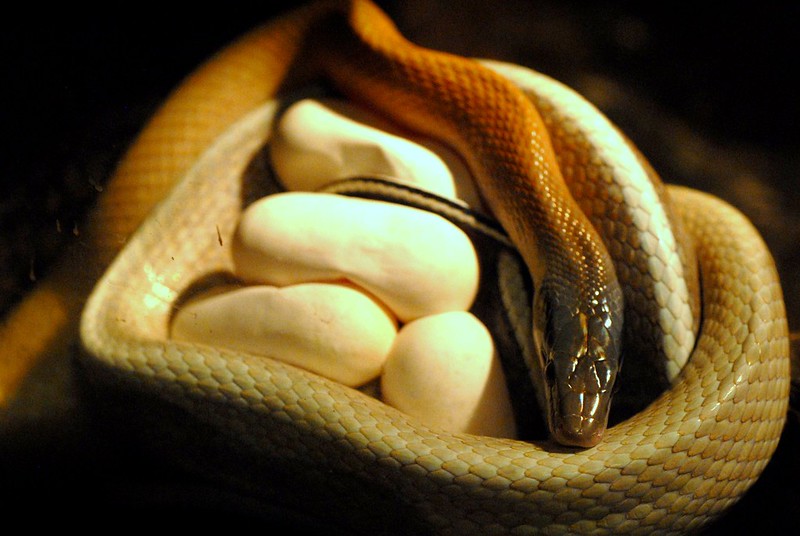
Breaking Out: Snake Egg Hatching
When it comes to the grand escape, snake eggs have a unique hatching process. Unlike their reptilian cousins, snakes have a specialized egg tooth, a temporary fixture that helps them slice through the eggshell. This little tool is crucial, as the eggshells of snakes are generally softer and more leathery compared to the hard shells of bird eggs.
Once the initial break is made, the young snake starts the wriggling journey out of its shell. It’s a slow and strenuous process, but these little critters are determined from the get-go. Here’s a quick rundown of what to expect:
- The egg tooth makes its debut, scoring the shell.
- The snake pushes against the shell, often resting between efforts.
- After breaking free, the hatchling rests, allowing its body to acclimate to the new environment.
Tip: Don’t be hasty to help a struggling snake hatchling. Interference can harm their natural development process.
The hatching time can vary, but patience is key. Nature has its own pace, and for these slithery beings, the emergence into the world is no speedy affair. It’s a fascinating spectacle for any herpetology enthusiast or nature lover to witness.
Lizard Hatchlings: The First Steps
Once lizard eggs hatch, the tiny reptiles emerge fully formed and ready to take on the world. Unlike some snake species, many lizards are precocial, meaning they are relatively mature and mobile from the moment they break free from the eggshell. Here’s a quick glimpse at what these little critters are up to in their first moments of life:
- Scampering to Safety: Immediately after hatching, lizard hatchlings make a break for it, instinctively seeking cover to avoid predators.
- Exploring the Menu: Their first meal is crucial, and they waste no time hunting for tiny insects or nibbling on vegetation.
- Testing the Waters: If their habitat includes water, they may take their first tentative swim.
Tip: While it’s tempting to think of these hatchlings as ‘mini-me’s’ of their parents, they often sport different patterns and colors that change as they mature.
The survival rate of these hatchlings can be quite low, with many challenges lying ahead. Predation, competition for food, and harsh environmental conditions are just a few hurdles they must overcome. But those that do make it through will grow rapidly, often reaching full size in a matter of months.
Size Matters: Comparing Egg Dimensions

How Big Are Snake Eggs?
When it comes to size, snake eggs can be quite the mixed bag. Generally, the size of the egg is a good indicator of the size of the snake that laid it. For instance, the massive python can lay eggs that are up to 5 inches long, while smaller species like garter snakes lay eggs that are just a little over an inch.
Here’s a quick rundown of the average sizes you might encounter:
- Python: 4-5 inches
- Rattlesnake: 2-3 inches
- Garter Snake: 1-1.5 inches
It’s fascinating to note that, unlike bird eggs, snake eggs are not rigid. They have a leathery texture that allows them to swell as the embryo grows. This is a nifty adaptation that helps the eggs survive in varying environmental conditions.
Tip: If you stumble upon snake eggs in the wild, it’s best to leave them undisturbed. Not only is it a matter of respect for wildlife, but in some places, it’s also the law.
Lizard Eggs: Size and Scale
When it comes to the size game, lizard eggs can be quite the mixed bag. Unlike their slithery counterparts, lizards lay eggs that vary widely in size depending on the species. For instance, the eggs of a common house gecko might be as small as a jellybean, while a monitor lizard’s clutch could rival golf balls. It’s a size spectrum that reflects the incredible diversity among lizard species.
Here’s a quick peek at how some popular lizard eggs measure up:
| Lizard Species | Egg Length (approx.) | Egg Width (approx.) |
|---|---|---|
| Common House Gecko | 1.5 cm | 1 cm |
| Green Iguana | 4 cm | 2.5 cm |
| Komodo Dragon | 7 cm | 5 cm |
Remember, the size isn’t just for show; it often has a direct impact on the incubation period and the resources the mother needs to invest. Larger eggs generally mean a longer wait before you’ve got little lizards scampering around.
Tip: Don’t be fooled by the size of an egg! The biggest eggs don’t always come from the biggest lizards. It’s all about the species’ strategies for survival and reproduction.
Survival of the Fittest: Egg Predation
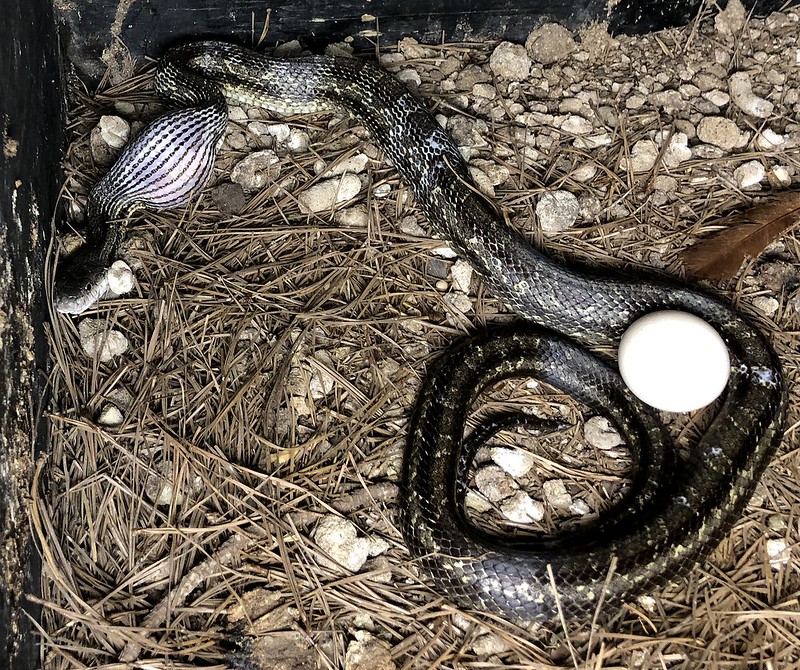
Common Predators of Snake Eggs
When it comes to the survival of snake eggs, the odds are stacked against them from the start. A variety of predators see these eggs as a tasty treat, making them a target from the moment they’re laid. Among the most common culprits are:
- Mammals: Raccoons, foxes, and skunks are opportunistic feeders that won’t pass up a chance to raid a nest.
- Birds: Crows and other large birds have a knack for spotting and snatching up snake eggs.
- Reptiles: Even other snakes, like the Kingsnake, can’t resist the temptation of a fellow serpent’s eggs.
It’s a tough world out there for snake eggs, with each of these predators bringing their own style of sneakiness to the table. For instance, raccoons are known for their dexterous paws, which allow them to dig into nests with ease.
Keep in mind that the presence of these predators can influence where snakes decide to lay their eggs, often pushing them to find more concealed and secure locations.
Lizard Eggs on the Menu: Predation Risks
Just like a buffet for predators, lizard eggs are a sought-after snack in the wild. These eggs face a gauntlet of hungry mouths, from the moment they’re laid until they hatch. The risks are real, and the list of predators is long, including mammals, birds, and even other reptiles.
| Predator Types | Examples |
|---|---|
| Mammals | Raccoons, Foxes |
| Birds | Crows, Magpies |
| Reptiles | Other Lizards, Snakes |
It’s a tough world out there for these little eggs, and they’ve got to be sneaky to survive. Lizards often employ clever hiding strategies, tucking their eggs away in secluded spots. But no matter how well-hidden, some predators have a knack for finding them.
Remember, the survival of lizard eggs is a numbers game. Lizards lay multiple eggs, hoping at least a few will dodge the dangers and hatch into the next generation.
Conservation Concerns: Protecting Reptile Eggs
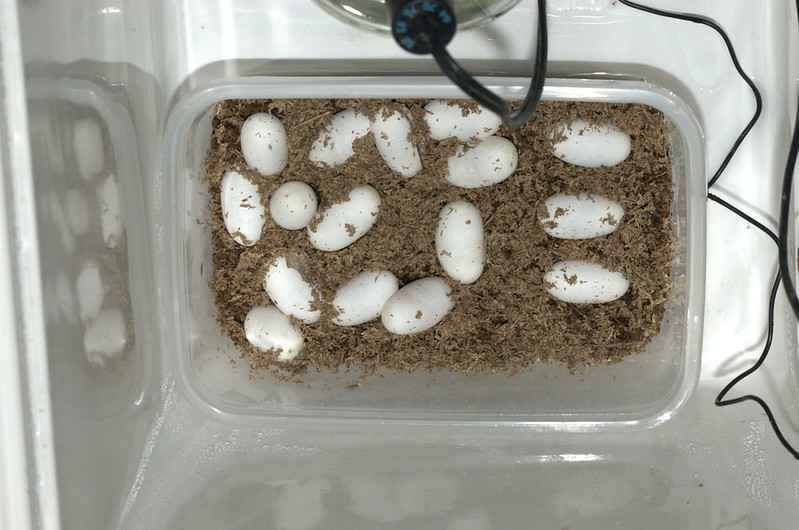
Threats to Snake Egg Survival
Snake eggs, much like the serpents themselves, face a slither of challenges in the wild. Predation is a significant threat, with a variety of animals such as raccoons, birds, and even other snakes finding these eggs to be a tasty treat. But it’s not just the animal kingdom that poses a risk; human activities have also encroached on the habitats of many snake species, leading to a decline in safe nesting sites.
Habitat destruction is another major concern. As forests are cleared and wetlands drained, the natural nesting grounds for snakes are rapidly disappearing. This not only makes it harder for snakes to find a safe spot to lay their eggs but also impacts the delicate balance of temperature and humidity needed for the eggs to develop properly.
Climate change is the sneaky culprit that’s altering weather patterns and creating extreme conditions, which can be detrimental to the incubation of snake eggs. Here’s a quick rundown of the key threats:
- Predation: Various animals and even other snakes
- Habitat Destruction: Loss of natural nesting sites
- Climate Change: Extreme weather and altered conditions
- Pollution: Contaminants affecting egg development
Remember, each egg carries the future of its species. Protecting snake eggs is crucial for maintaining the delicate balance of our ecosystems.
Lizard Egg Conservation: What’s Being Done?
Conservation efforts for lizard eggs are as diverse as the species themselves. Organizations and researchers are working tirelessly to ensure these little capsules of life get a fighting chance. From habitat protection to breeding programs, the strategies are varied and tailored to the needs of different lizard populations.
- Habitat Protection: Safeguarding natural environments to prevent habitat loss.
- Breeding Programs: Captive breeding and reintroduction to bolster wild populations.
- Legislation: Enacting laws to protect lizards and their eggs from over-collection and trade.
- Community Engagement: Educating locals on the importance of lizards in the ecosystem.
Remember, every effort counts when it comes to conservation. Even small actions can lead to big changes for the survival of lizard eggs.
While these efforts are commendable, challenges such as climate change and human encroachment continue to threaten lizard egg survival. It’s a race against time, and conservationists are the unsung heroes in this battle for balance.
Fun Facts: Oddities in Reptile Reproduction
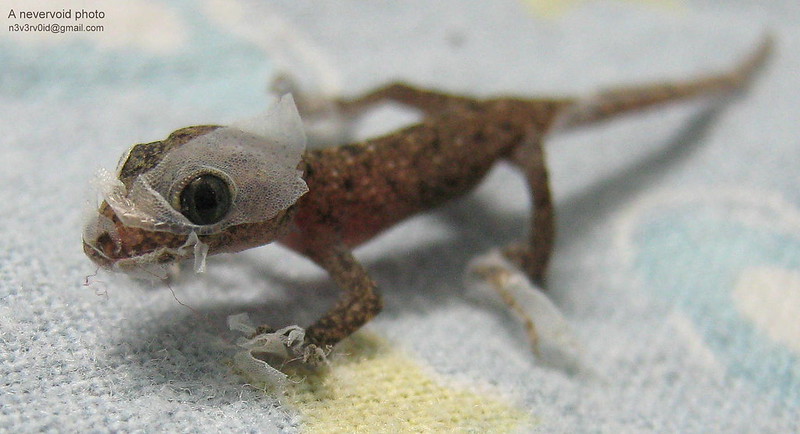
Weird and Wonderful Snake Egg Facts
When it comes to snake egg trivia, there’s no shortage of curiosities. For starters, did you know that some snake species lay leathery eggs, while others give birth to live young? That’s right, not all snakes stick to the egg-laying script!
- The King Cobra is a meticulous parent. It’s one of the few snake species that actually builds a nest for its eggs, which is quite a rare behavior among these slithery reptiles.
- Sea snakes have evolved to give birth in the ocean, completely bypassing the need for laying eggs on land.
- Some snakes, like the African egg-eating snake, have a diet that consists almost entirely of eggs, making them both predator and prey in the egg-centric circle of life.
Remember, while snake eggs might seem similar at a glance, the diversity in their reproductive strategies is as varied as the snakes themselves.
Lizard Egg Trivia That Might Surprise You
Lizard eggs might not get the same spotlight as their serpentine counterparts, but they hold their own set of surprises. For starters, did you know that some lizards, like the Australian skink, give birth to live young instead of laying eggs? That’s right, not all lizards are oviparous (egg-laying) creatures!
Here’s a quirky fact: certain lizards lay eggs with flexible shells. Unlike the rigid shells of bird eggs, these supple shells can swell and shrink depending on the humidity levels, which is pretty nifty for adapting to various environments. And while we’re on the subject of shells, some lizards lay eggs that are nearly transparent, allowing a sneak peek at the developing embryo inside.
- Some lizards can delay egg-laying until conditions are just right.
- Geckos have a unique talent for sticking their eggs to surfaces, keeping them safe from harm.
- The size of lizard eggs can vary dramatically, from the tiny eggs of geckos to the substantially larger eggs of monitor lizards.
Remember, the world of lizard eggs is as diverse as the lizards themselves, so there’s always more to learn and be amazed by!
Wrapping It Up: Snake Eggs vs. Lizard Eggs
In the end, while both snake and lizard eggs might look similar at a glance, they’re as different as, well, snakes and lizards! From the texture of their shells to the environments they thrive in, these eggs tell a story of adaptation and survival. Whether you’re a budding herpetologist or just curious about the reptilian world, remember that the devil is in the details—or in this case, the eggshells. Keep exploring, and who knows what other egg-citing differences you’ll uncover!
Frequently Asked Questions
How can you distinguish between snake eggs and lizard eggs?
Snake eggs are generally soft-shelled and leathery, while lizard eggs tend to have a harder shell. Additionally, snake eggs are often elongated, whereas lizard eggs can be more spherical or oval.
Where do snakes and lizards lay their eggs?
Snakes often lay their eggs in hidden, warm locations like in the soil, under rocks, or in decomposing vegetation. Lizards may lay their eggs in similar locations but some species have more specialized nesting sites, such as crevices in rocks or tree hollows.
Do snakes and lizards care for their eggs?
Most snakes lay their eggs and then leave them to incubate naturally. However, some pythons exhibit parental care by coiling around their eggs to regulate temperature. Many lizards also leave their eggs after laying, but there are exceptions, like the Five-lined Skink, which guards its nest.
How long does it take for snake and lizard eggs to hatch?
Incubation periods can vary widely among species. Generally, snake eggs may take 2 to 3 months to hatch, while lizard eggs can hatch within 40 to 60 days, depending on the temperature and species.
What factors influence the sex of snake and lizard offspring?
For many reptiles, including some snakes and lizards, the temperature during critical periods of egg incubation can determine the sex of the offspring, a phenomenon known as temperature-dependent sex determination.
Are snake and lizard eggs at risk from predators?
Yes, eggs of both snakes and lizards are vulnerable to predation from a variety of animals, including mammals, birds, insects, and even other reptiles.
How are conservationists working to protect reptile eggs?
Conservation efforts include habitat protection, research on breeding patterns, artificial incubation programs, and public education to reduce the destruction of nesting sites.
What are some interesting facts about snake and lizard reproduction?
Some snakes, like the Brahminy blind snake, are parthenogenic and can reproduce without mating. In contrast, some lizards, such as the New Mexico whiptail, are all-female species that reproduce through parthenogenesis as well.
